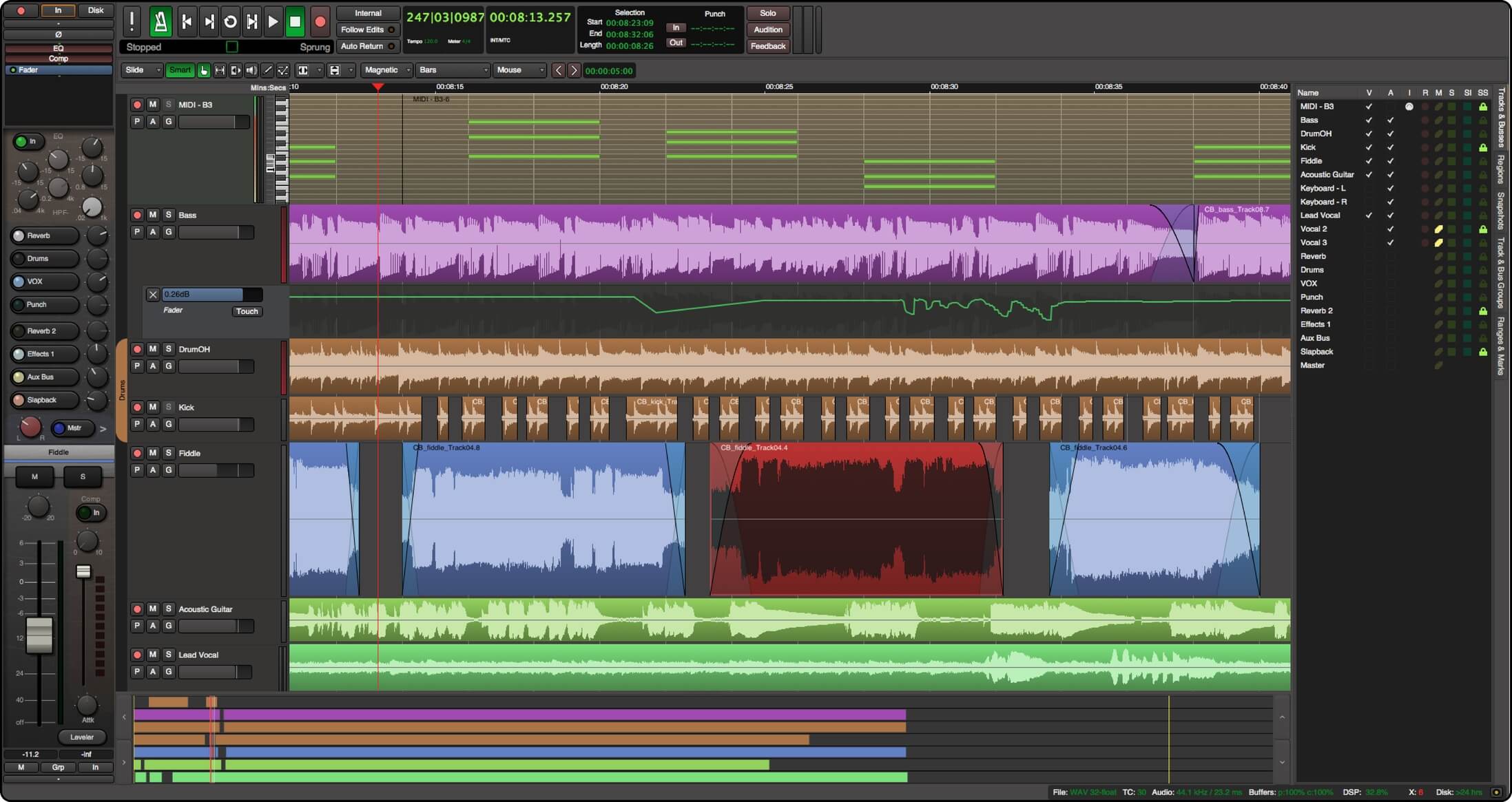

Testing and experimentation phase, the design morphed intoĪ combination of Ardour and Harrison features in the channel strip.įor those who are familiar with Ardour's existing design, Mixbus was Interact correctly to recreate console functionality, and freeform DAW summingĪrchitecture does not lend itself to analog production styles. The original idea behind Mixbus was a simple Harrison "channel strip" plugin.īut after some experimentation, it became obvious that simple plugins don't Since 2004, when they used Ardour as the basis for the Xdubber Market." Harrison has had an ongoing collaboration with Paul Davis That doesn't further add to the fragmentation of the workstation Nearly 10 years, and has thousands of users, it is a stable platform We used the Ardour open-source workstation as the Mixbus Launch a "me too" workstation in an already crowded market. Supports AudioUnit plugins and any CoreAudio interface.Īccording to Harrison product director Ben Loftis, "Harrison didn't want to.Extensive DAW features via the Ardour Digital Audio Workstation.Comprehensive "at-a-glance" metering with peak, peak hold, andĬompressor gain reduction visible on every track and bus.

Plugin delay compensation to support effects such as parallel.Saturation, K-meter, and Limiting to help you make polished mixes. Stereo Master Bus that features Tone controls, Analog Tape.Tone controls, Compression, Sidechaining, and Analog Tape Saturation. 4 Stereo Mix Buses (can be used for groups or auxes) featuring.Power) featuring High-pass Filter, EQ, Compression, and 4 Mix Bus Unlimited stereo or mono input channels (based on available CPU.Saturation, and Summing based on Harrison's world-renowned largeįormat analog and digital mixing consoles. Precision DSP algorithms for EQ, Filter, Compression, Analog Tape.Harrison's renowned 32-series and MR-series music consoles. Straightforward “knob per function” mixer layout based on.Performance "in the box" while achieving a sound that harkens back to Mixbus enables the user to record, edit, and mix a musical TrueĪnalog Mixing is based on Harrison's renowned 32-Series and MR-SeriesĬonsole designs, combined with Harrison's proprietary digital mixing Knob-per-function interface called "True Analog Mixing"(tm). Mixbus enhances Ardour by providing critical mixing functions in a Mixbus®, a customized version of Ardour for OS X. I will add more to this thread as and when Studio One either pleases or frustrates me.Harrison, the manufacturer of world-class analog and digital consoles,Īlong with Paul Davis, lead developer of Ardour are proud to announce I wonder if that’s because Mixbus was already doing some analogue modelling through the channel EQs, so the extra difference of adding a modelling plugin was less.

On Mixbus, I wasn’t really aware of that. I also think Mixbus 32c must do more under the hood than I thought, because I noticed when I was adding plugins in Studio One, even before I’d touched a knob, that I could hear quite clearly the analogue modelling of, say, a Neve preamp or the difference between MJUC’s 3 compressor modes. I’m not totally sold on it, but further investigation is needed. I was expecting something quite subtle but there’s an obvious character even with the gain turned down. But… I’m surprised the Console Shaper, which is a plugin that operates on every track & bus, is so coloured. So far I’ve hardly had time to do anything with it. So, because I’m thinking about doing some more modern production with electronic percussion, virtual instruments etc, I thought I’d get Studio One. While I have successfully recorded & edited tracks from scratch in it, and there are some very well thought through things like the automatic crossfades and translucent waveforms etc, the virtual instrument and midi editing is pretty rudimentary and slip editing multitracked drums can be a slow process. For mixing, I really like it - the limitations of the fixed bussing scheme don’t bother me, and the VST implementation (apart from total lack of VST3, 32bit bridging & ARA capability) is very good in terms of signal flow & flexibility of routing inputs & outputs.įor recording and production it’s a bit less brilliant, though. I’ve been using Harrison Mixbus 32c for the last couple of years.


 0 kommentar(er)
0 kommentar(er)
